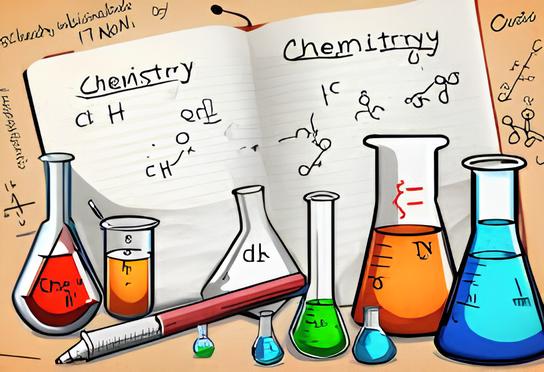JAMB Biology Note-Internal Structure of a Flowering Plant
Topic
Internal Structure of a Flowering Plant
Sub-Topics
- Root
- Stem
- Leaf
Table of Contents
LESSON CONTENT
A. Internal Structure of a Flowering Plant
1. The Root
- Transverse Section (T.S.):
- Epidermis: Outermost layer without a cuticle, specialized for absorbing water and minerals from the soil.
- Cortex: Made up of parenchyma cells; stores food and facilitates water transport.
- Endodermis: Inner boundary of the cortex with a Casparian strip to control water movement into the vascular cylinder.
- Pericycle: Produces lateral roots and contributes to secondary growth in some plants.
- Vascular Bundle:
- Xylem: Arranged in a star-shaped pattern; conducts water and minerals upward.
- Phloem: Found between the xylem arms; transports food produced in leaves.
- Function:
- Anchors the plant in the soil.
- Absorbs water and minerals.
- Stores reserve food in some plants (e.g., carrot).
2. The Stem
- Transverse Section (T.S.):
- Epidermis: Outer protective layer with a waxy cuticle to reduce water loss.
- Cortex:
- Collenchyma: Provides mechanical support.
- Parenchyma: Stores food and facilitates photosynthesis.
- Vascular Bundles:
- Xylem: Transports water and dissolved minerals upward.
- Phloem: Transports organic nutrients like glucose from leaves to other parts.
- Cambium: Present between xylem and phloem; responsible for secondary growth.
- Pith: Central part of the stem; stores food and water.
- Function:
- Supports leaves and reproductive structures.
- Conducts water, minerals, and nutrients.
- Stores food in certain plants (e.g., sugarcane).
3. The Leaf
- Transverse Section (T.S.):
- Epidermis: Upper and lower layers; contain stomata for gas exchange and a cuticle to prevent water loss.
- Mesophyll:
- Palisade Mesophyll: Tightly packed cells with chloroplasts for photosynthesis.
- Spongy Mesophyll: Loosely arranged cells with air spaces for gas diffusion.
- Vascular Bundle:
- Xylem: Transports water to leaf cells.
- Phloem: Carries photosynthates (e.g., sugars) from the leaf to other parts of the plant.
- Function:
- Photosynthesis: Produces food for the plant.
- Transpiration: Regulates temperature and water movement.
- Gas Exchange: Allows CO₂ and O₂ movement during photosynthesis and respiration.
4. Supporting Tissues in Plants
- Collenchyma: Provides flexibility and mechanical support in growing stems and leaves.
- Sclerenchyma: Provides rigidity and support; found in mature parts of the plant.
- Xylem Fibres: Contribute to water transport and structural support.
- Phloem Fibres: Provide tensile strength to the plant.
B. Internal Structure of a Mammal
1. Arrangement of Internal Organs
- Digestive System:
- Organs: Mouth, esophagus, stomach, small and large intestines, liver, pancreas.
- Arrangement:
- Stomach lies on the left side of the abdominal cavity, followed by the intestines.
- Liver occupies the upper right abdominal cavity; pancreas lies behind the stomach.
- Function: Breakdown and absorption of food.
- Reproductive System:
- Organs:
- Male: Testes, vas deferens, prostate gland.
- Female: Ovaries, fallopian tubes, uterus.
- Arrangement: Located in the lower abdominal cavity.
- Function: Production of gametes and support for reproduction.
- Organs:
- Excretory System:
- Organs: Kidneys, ureters, bladder, urethra.
- Arrangement:
- Kidneys are positioned dorsally on either side of the spine.
- Bladder lies in the pelvic cavity.
- Function: Excretion of metabolic waste and regulation of water balance.
2. Description of Organs
- Digestive Organs:
- Stomach: J-shaped organ involved in food digestion.
- Intestines: Long coiled tubes for absorption of nutrients and water.
- Reproductive Organs:
- Male and female organs vary in structure but collectively function in reproduction.
- Excretory Organs:
- Kidneys: Bean-shaped organs that filter blood.
- Bladder: Stores urine before excretion.
Comparative Analysis
| Feature | Flowering Plant | Mammal |
|---|---|---|
| Transport System | Xylem and Phloem | Blood vessels (arteries, veins, etc.) |
| Supporting Tissues | Collenchyma, Sclerenchyma | Bones, cartilage, and muscles |
| Nutrient Transport | Phloem (sugars) | Blood (glucose, oxygen, etc.) |
| Waste Removal | Not applicable (waste stored) | Kidneys, urethra |
Conclusion
Understanding the internal structures of flowering plants and mammals highlights their adaptations to their environments and lifestyles. Plants rely on vascular bundles for nutrient and water transport, while mammals use specialized organs for digestion, reproduction, and excretion.






